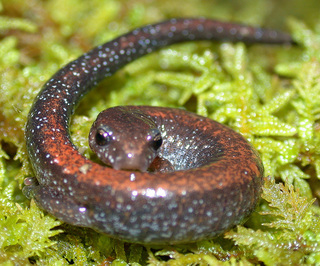I have had personal experience with both Ecobeaker and Evobeaker from SimBio. This software allows students to construct and run simulation programs from school computers. Some of the concepts investigated are extremely sophisticated, and more readily accessible if actually seen.
I've done the Isle Royale simulation as well as the Domesticating Dogs sim. I think one of the most enjoyable features of these programs is that once you master the basics, you can start playing with them and seeing results. For example, you can change the amount of plants, moose, and wolves and see how changing one variable affects the entire environment. Students can immediately see how one member of a food chain affects the entire web.
I have not used the other programs, but I am sure they work similarly. Ecological and evolutionary processes exist on a timeline that can't actually be seen or experienced in a classroom. These simulations show students how these concepts apply by actually watching populations or environments change through time. For an inquiry-based classroom, the use of these programs could be invaluable for student learning.
I know that when I get a teaching job, I am going to lobby my department head for these programs!
Tuesday, November 24, 2009
WebQuest review
I found an interesting and useful WebQuest entitled: Genes: The Building Blocks of Life. The especially cool thing about this WebQuest is that it was made in Virginia, and therefore conforms to the Virginia Standards of Learning for Biology.
Funding for biological ressearch is always tight, and this WQ allows students to explore various areas of genetics research and come to a consensus about which aspects of this research deserve funding. In the process, they learn about genetics and it's varied applications. I especially liked the fact that part of the process of this WQ was for students to discuss, debate, and arrive at a consensus with their classmates that everyone in the group was happy with. This is an important life skill, as well as in science.
The WQ is entirely on one page, though I think it would have worked better if each navigation link was to a different page instead of a section on one page. However, I thought that the directions for students were very clear, and I liked that each student would have to be knowledgable about the basics of genetics before they could proceed with the rest of the project. I also like that the WQ maker included resources for building consensus and creating a persuasive argument. It is always a bad thing to assume students possess knowledge that they may not have, and those pages provide a blueprint and a reference for once they get to that stage of the WQ.
I really liked that each perspective was grounded in a current issue in applied genetics. Some of these issues do not have clear cut answers, and require background knowledge to make judgment calls. This WQ not only helps students understand basic genetic info, but allows them to apply that new knowledge in a novel situation with real-life underpinnings. I also liked that the rubric takes into account the research, the consensus with the group, and the presentation product. This shows students that their work as a group is valued and they are being evaluated for their process as well as their final product.
Overall, this was a good WQ. I can see areas that could use a little work (i.e. obtaining links from more varied sources), but I liked a lot of aspects of the WQ and it seems very student friendly.
Funding for biological ressearch is always tight, and this WQ allows students to explore various areas of genetics research and come to a consensus about which aspects of this research deserve funding. In the process, they learn about genetics and it's varied applications. I especially liked the fact that part of the process of this WQ was for students to discuss, debate, and arrive at a consensus with their classmates that everyone in the group was happy with. This is an important life skill, as well as in science.
The WQ is entirely on one page, though I think it would have worked better if each navigation link was to a different page instead of a section on one page. However, I thought that the directions for students were very clear, and I liked that each student would have to be knowledgable about the basics of genetics before they could proceed with the rest of the project. I also like that the WQ maker included resources for building consensus and creating a persuasive argument. It is always a bad thing to assume students possess knowledge that they may not have, and those pages provide a blueprint and a reference for once they get to that stage of the WQ.
I really liked that each perspective was grounded in a current issue in applied genetics. Some of these issues do not have clear cut answers, and require background knowledge to make judgment calls. This WQ not only helps students understand basic genetic info, but allows them to apply that new knowledge in a novel situation with real-life underpinnings. I also liked that the rubric takes into account the research, the consensus with the group, and the presentation product. This shows students that their work as a group is valued and they are being evaluated for their process as well as their final product.
Overall, this was a good WQ. I can see areas that could use a little work (i.e. obtaining links from more varied sources), but I liked a lot of aspects of the WQ and it seems very student friendly.
Subscribe to:
Posts (Atom)



